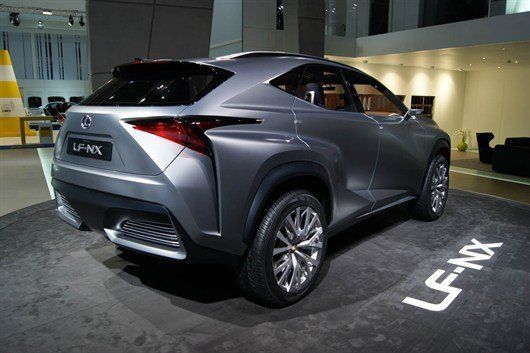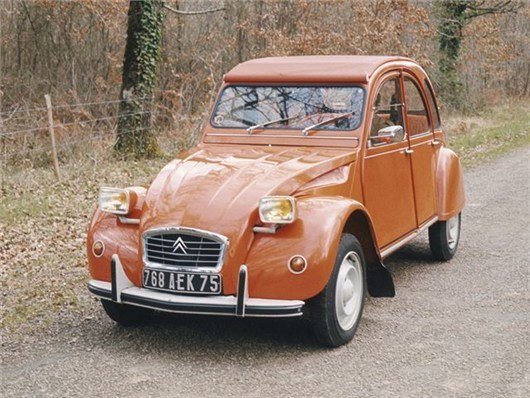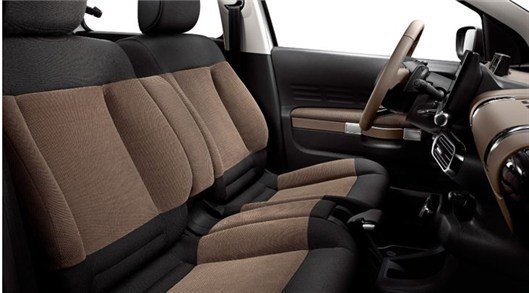Citroen gets its character back

In the 1970s and 1980s, if you wanted something quirky and unique you bought a Citroen. Cars like the curious 2CV tin snail and the high tech, magic carpet smooth CX stood out as individual and characterful. Things became a little less innovative in the 1990s unfortunately, as Citroen blended into a background of mundane, copy-pasted models.
It might be time for the French manufacturer to go back to the good old days, though. I recently spent an evening with its newest model, the C4 Cactus, and on first impressions it looks like Citroen has its mojo back - it's doing things differently, and more importantly it's keeping things simple in an era when most car manufacturers are adding more and more complication.
If you compare the C4 Cactus to something like the Lexus LF-NX you'll see how simple the styling is. The NX has its profile broken up by aggressive angular slashes, which are complicated to craft and repair. The C4 Cactus, on the other hand, has fairly flat door panels adorned with so called air bumps.

C4 Cactus is a far cry from this angular Lexus concept
These don't just add some identity to the side view of the car - they're practical, because they are designed to absorb the bumps and scrapes you tend to suffer in supermarket car parks. They're also present under the front and rear light clusters.
They can be customised in a number of colours, initially to conrast against a fairly vivid selection of paint finishes. Eventually, though, there is no reason they can't be incredibly vibrant and as unique as the character of the driver - Citroen even showed us that they can be branded up with logos if needs be.
The cabin is just as interesting as the exterior. The dashboard is topped with a digital instrument binnacle that's simple and clear, while the glovebox is styled like a luggage chest. It opens upwards, so to make it suitably large the airbag has been relocated to the roof, but with no impact on safety.
The glovebox will even be the right size in right hand drive cars, rather than shrunken to uselessness as is so typical of Citroens, thanks to a relocated fusebox. Left-hand drive Citroens usually have their fusebox by the steering wheel, while UK cars have it in the glovebox, cutting the useful space in half. In the C4 Cactus it's in neither of those places.
Almost every bit of the cabin is neat and simple. The gear selector on an automatic consists of three buttons marked D, N and R - easy and practical to use. And in a lovely French touch the front seats are bench style to bring the driver and passenger closer together.

Back to basics for Citroen. Not quite this basic though...
The back row hasn't been forgotten - the rear windows pop out instead of winding down, which sounds like a cost cutting measure. But it liberates space, making the back row wider and giving more storage room in the door bins. It also saves weight, like many of the design choices have. Indeed, the C4 Cactus comes in at under a ton, which sounds unfeasible for a modern car as big as a Ford Focus. The Focus weighs more than 1200kg.
The C4 Cactus' light weight points to a vehicle that should be fairly efficient. Official figures for the most frugal diesel are 91.1mpg and 92g/km. That doesn't mean real world economy will be the same, but a low kerb weight gives the C4 Cactus a fighting chance at the very least.
It's early days for the C4 Cactus, and the proof will always be in the pudding. We haven't had the chance to drive the car yet, nor test it's practicality and durability in the real world. But the ingredients are there to make it a great success. The Citroen C4 Cactus goes on sale in late 2014. Click here to read more.


 John Slavin
John Slavin
 Honest John Awards 2017: Land Rover Discovery Sport named Most Popular SUV for second year in a row
Honest John Awards 2017: Land Rover Discovery Sport named Most Popular SUV for second year in a row
 2022 Smart #1 SUV: price, specs and release date
2022 Smart #1 SUV: price, specs and release date
 2023 Ferrari Purosangue SUV: Prices, specs and release date
2023 Ferrari Purosangue SUV: Prices, specs and release date
 Citroen DS3 Racing revealed
Citroen DS3 Racing revealed
 Infiniti adds diesel to the range
Infiniti adds diesel to the range
 Volvo XC90 chosen as SUV of the year at 2014 Honest John Awards
Volvo XC90 chosen as SUV of the year at 2014 Honest John Awards
 March new car registrations better than expected
March new car registrations better than expected





.jpg)






Add a comment